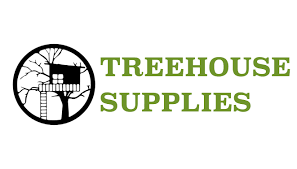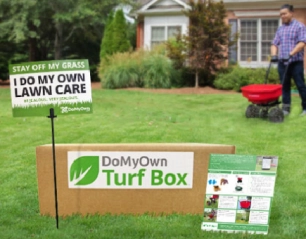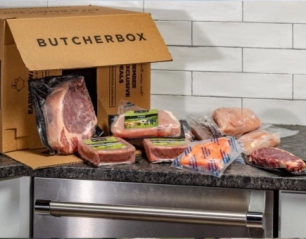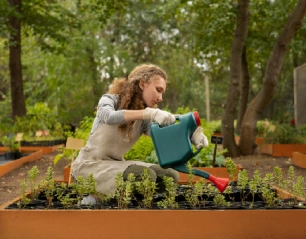Urban farming refers to the process of growing food in large cities as a way of imitating country farming in the city. It makes it possible for people living in cities to employ environmentally friendly techniques, cultivate plants, and reduce their reliance on external sources inside their city houses. Regardless of whether you live in an apartment, or own a home with a small backyard or no yard at all, urban homesteading is a viable way to be closer to nature, thus allowing one to become environmentally friendly and live a more fulfilling life.
The Principles of Urban Homesteading
Essentially, the concept of urban homesteading centers on practices of sustainability, reasons for autonomy, and social action. The key components include:
- Food Production: People trying to live sustainably mainly in the cities resort to growing their plant foods and herbs, which is basic in urban farming or homesteading. This can be done using old used containers, raised beds, or any vertical gardening that is preferred or possible. Sheltered areas infested with full-blown greenery can at times be created even on mini terrains such as balconies and windowsills.
- Preservation and Storage: On the lessons of growing food, urban homesteaders are supposed to learn how to properly preserve and store food. Preservation methods like canning, fermenting, and drying allow food to be saved and be a source of homegrown produce in the various seasons of the year.
- Energy Efficiency: Urban farming practitioners want to use minimal power, time, and money on systems that use exhaustible resources. This may entail sourcing energy-efficient devices and equipment, laying down solar power, and being conscious of energy consumption.
- Water Conservation: Water is scarce and therefore; it should be used sparingly, especially in urban regions. Collection of rainwater, usage of grey water, and adoption of drought-resistant plants should be done to minimize wastage of water and provide the garden with water at all times.
- Waste Reduction: Sustainability is part and parcel of urban homesteading which involves the reduction of waste through the composting and recycling of all material that is usable. This breaks down kitchen scraps and yard waste to provide nutrients to the garden as well as cutting on the amount deposited on the landfill.
Assess Your Space
The first in laying the foundation of urban homesteading involves the evaluation of the space you have in your house/flat. Regardless of whether you own a balcony or rooftop, backyard, or have a window with direct access to sunlight, many methods can help you grow your food and become more sustainable successfully. Determine the particular type of exposure you have and preferably position your garden in the corresponding area.
Start Small
However, as much as possible, novice homesteaders should begin by making modest attempts at homesteading while expanding their ideas slowly. We recommend starting with some of the simplest types of plants including basil, tomato, or lettuce. When you are confident and skilled you can turn your garden a lot edgier and plant even more complex crops.
Container Gardening
Due to space constraints, people contemplate container gardening as the best way to go. For this type of plant growing you can directly use pots buckets or any other object that can be used to grow the plants. It is also important that you have a good drainage system in your compound and it is also advisable to use quality soil in case you want to get the best yields. Other spatial strategies that may be used and are applicable include; Hanging baskets and Trellises which are Vertical gardening.
Composting
Recycling of organic matter is very important as part of the urban homemaking process. One of them is the elimination of waste and it also produces nutrient-rich compost for the garden needs. Get an outdoor bin that will be placed in your backyard or acquire a worm compost bin if one lives in a flat. Use kitchen waste like peels, leftovers, and other discarded food as well as cuttings and trimmings from your yard, and incorporate them in the compost to produce nutrient-rich soils.
Raising Small Livestock
In case of ample space, one can always go for keeping pigs, cows, or goats but if the space is limited, one can go for small animals such as chickens, rabbits, or bees. Many things can be gained from these animals; the chickens can supply eggs that are fresh while the rabbits will supply food to eat and also manure for manure sauce. It can serve as a way of overcoming the lack of pollinators and also give honey. Before moving your livestock to the urban homestead, it is crucial to verify the legal requirements and secure the relevant permits to provide for livestock rearing.
Renewable Energy
You can integrate renewable energy sources into your urban gardening to increase sustainability. Lighting systems such as solar panels, wind turbines, and even small hydropower can help you to reduce the amount of electricity you purchase and this will help you to cut on the bills.
Building a Community
The act of urban homesteading is not just the work of an isolated individual but is also the assembling of people who have common ideals. It is wise to belong to local gardening clubs, engage in group gardening activities, and attend seminars that yield tips, assistance, and companionship. Plant extension and provision of seeds and food donations of excess produce from neighbors could help towards the creation of community gardens.
Conclusion
Urban farming, or urban homesteading is a wonderful way of reproducing rural farm life within the urban setting to provide a fulfilling lifestyle. Through your food production, resource and energy conservation as well as the formation of small communities, it is very possible to realize a more sustainable and even self-sufficient urban life. It may mean turning a small balcony into a mini-garden, controlling the pests with natural methods in a backyard garden, or even reaping honey from bees placed on your balcony. Get ready to accept the process and taste the sweet fruits of the efforts where you turn the plot of your city into a successful urban homestead.
Frequently Asked Questions (FAQs)
It is the process of maintaining a sustainable and independent life in an urban environment, for instance, producing foods, finesse, water, and many other things without necessarily relying on the typical resources found in the city.
Indeed, one can practice urban homesteading even when living in apartments as long as they embrace container gardening and vertical farming, among other activities such as indoor composting.
It enables people to grow their food in small ways within the large complicated system that is a city, it reduces carbon footprint, promotes the use of fewer resources, engages in shared responsibilities within a community, and many more.
Was this helpful?































































































































